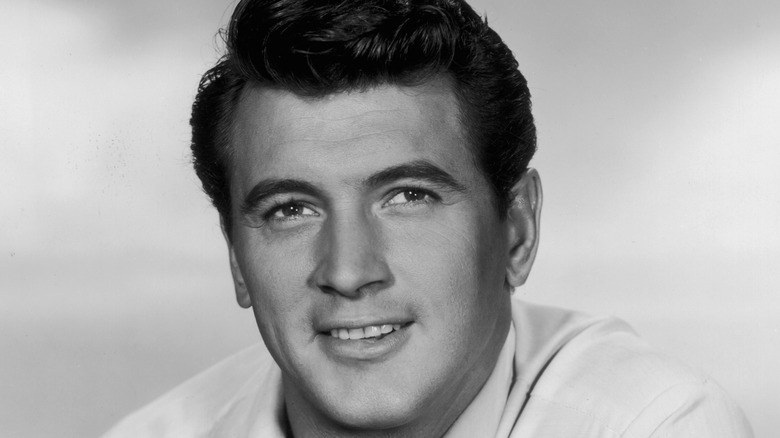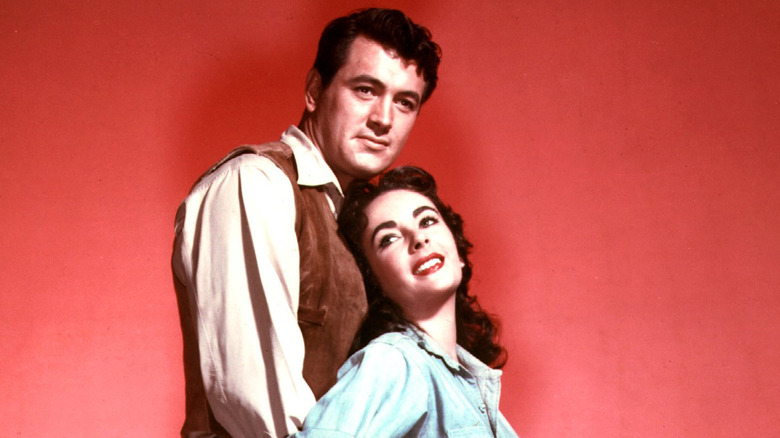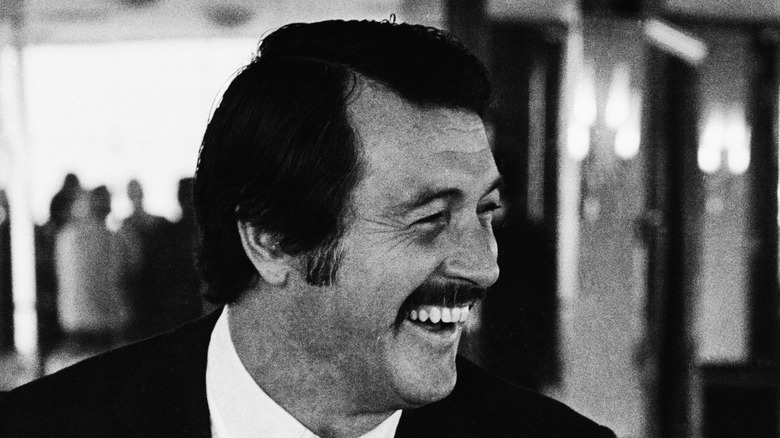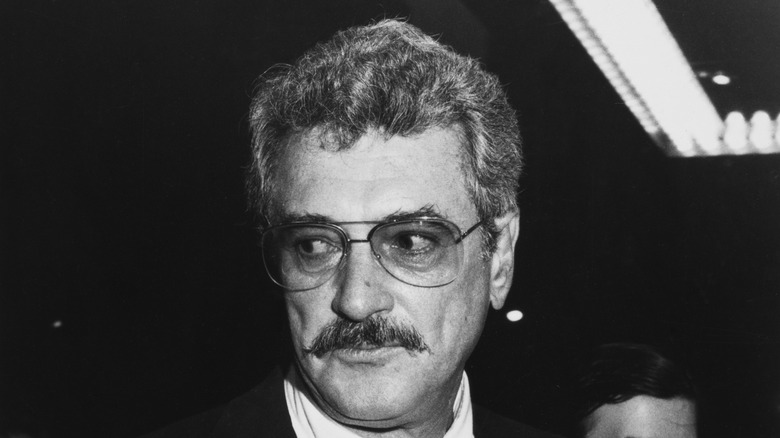The Truth About Rock Hudson's Real Name
Few Hollywood stars of the '50s and '60s had the star power and popularity of Rock Hudson. He starred in dozens of TV shows and movies during his 30-year career and was repeatedly voted one of the most popular actors in the industry (via his obituary in The New York Times).
But it wasn't always this way. He started out as Leroy (Roy) Harold Shearer Jr., a handsome young man from the midwest. His alcoholic father left the family when Roy was 4, in the midst of the Great Depression. His mother remarried, to a man with whom he did not get along. He fell in love with cinema working in the local theater but couldn't get a part in school plays because he couldn't remember his lines (via Turner Classic Movies).
He enlisted in the Navy during World War II and served in the Philippines as an airplane mechanic. When he was discharged in 1946 he moved to Hollywood to follow his dreams. In his spare time he would wait outside of the studios, sending his headshot to different producers (via Britannica).
Rise of a Star
Hudson was discovered by talent agent Henry Wilson in 1947. Wilson promptly changed the would-be actor's name from the bland Roy Harold Shearer to the more rugged Rock Hudson, inspired by the Rock of Gibraltar and the Hudson River (via Britannica).
Despite his passion and good looks, Hudson had a lot of work to do before he was ready to be a star. Before his first role in 1948 he had his teeth capped and took lessons in acting, singing, dancing, fencing, and riding. Despite all this training he still couldn't remember his lines. His one scene in his first film, "Fighter Squadron," took 38 takes to film (via IMDb).
It took Hudson a few more years to find his stride, but by 1952 he landed his first leading role, in "Scarlet Angel," followed by his first collaboration with director Douglas Sirk, in "Has Anybody Seen My Gal." His star power was cemented two years later in the Sirk film "Magnificent Obsession." Two years after that Hudson received his only Oscar nomination, for his role in "Giant," in which he starred opposite Elizabeth Taylor and James Dean.
Transition to TV and decline
Starting in 1959, Hudson began to turn away from dramatic roles and took on roles in romantic comedies, most notably a number of films with Doris Day, starting with "Pillow Talk." He found some critical success with the 1966 sci-fi film "Seconds" which he helped produce with his production company Gibraltar Productions (via Turner Classic Movies). And his 1968 film "Ice Station Zebra" was also popular, though it struggled to recoup its budget (via AFI Catalog).
Although he was still popular with the public, his movies were less so. Beginning in the 1970s he began his transition to the small screen, starring alongside Susan Saint James in "McMillan and Wife" on NBC. The mystery series was popular and aired between 1971 and 1977. In 1982 he starred in "The Devlin Connection" on NBC. The show started off strong but lost its momentum due to a heart attack brought about by Hudson's years of heavy drinking and smoking.
His final TV appearance was on the '80s TV phenomenon "Dynasty." His role of Daniel Reece was originally meant to be much larger, but the actor's sudden death in 1985 changed those plans.
Last days
During the last year of his life he became increasingly thin and started to lose his memory. On the set of "Dynasty" he couldn't remember his lines and had to use cue cards (via Turner Classic Movies). His last television appearance was a 1985 reunion with Doris Day on her new series. Viewers were shocked to see Hudson gaunt and struggling to speak. He had dropped from 210 pounds 10 years before to a mere 140 pounds (via IMDb).
Throughout his professional life, Hudson maintained a public image of heterosexuality, despite a string of homosexual relationships. In June 1984 he was diagnosed with AIDS and by 1985 he could no longer hide it. When he came out in July of that year it helped the world shrug off the stigma of AIDS and became an early turning point in the fight against the disease (via Biography).
For most of his life he was the epitome of rugged masculinity in Hollywood. But with the revelation of his diagnosis he became much more than that. He became a human face for the AIDS epidemic in an era when few would advocate for its victims, and helped to change popular perceptions about the disease forever.



